Knives are a practical, standard item that most of us use on a daily basis. Pocket knives are especially handy as they are easily portable in your pocket, meaning you can keep them on your person until you come across some fruit that needs skinning or some other need for a knife arises. Then Bam! Out comes the pocket knife. These incredibly useful tools come in a variety of shapes and sizes, from the larger army style survival knives, through to the smaller single purpose collapsible blades.
The important thing with any of these pocket knife types is that the blade is sharp. This article will explain how to sharpen a pocket knife in clear steps so that you can easily ensure that your pocket blade stays ready to use and razor sharp all the time. Why is this an important life skill to learn? Well, we’ve all heard the saying, “Don’t chop harder, sharpen the axe instead.”
This is especially true when it comes to pocket knives. Because of their relatively small blades and lack of use for long periods at a time, they often need to be sharpened before use. Having a sharp blade will make your cutting tasks so much more efficient, and even enjoyable. But before you can learn how to sharpen a blade you’ll need to learn how to tell if your pocket knife is dull and actually needs sharpening. For tips and guidelines on how to properly sharpen any knife, see our informative piece on this subject.
How To Tell If Your Blade Is Dull
Dull blades can not only be frustratingly slow to use, but they can also be dangerous. Just try (or rather, don’t try) cutting a ripe tomato with a dull edge and not slicing any of your fingers in the process.
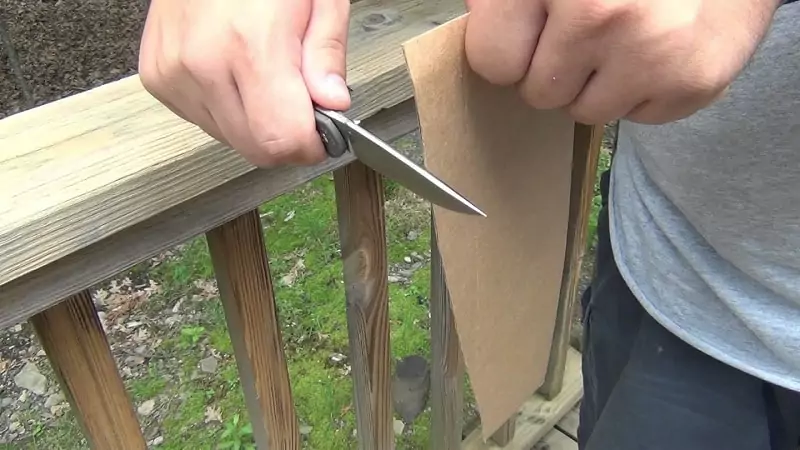
To ensure your blade is reliable and safe, test its dullness before starting any cutting. There are several ways to do this:
- The safe way: Shine a bright light like your headlamp at the blade or put it in direct sunlight. A sharp blade will not reflect light, so if your blade is sparkling it could probably use a sharpening.
- The easiest way: Touch the sharp part of the blade to your thumbnail, if it’s the blade is sharp it should catch on your nail. If it’s dull the blade will slide easily along the nail surface.
- The obvious way: Start sawing away at whatever task you want your little pocket knife to perform. If your blade is dull you’ll notice pretty quickly because it will be a slow and frustrating journey to make any progress.
All of these tests work well and are fairly simple to carry out. You might want to test them on your pocket knife now. Once you know how to ascertain whether your blade is dull, you can start learning how to sharpen it when that occurs. See our article featuring the topnotch survival knives today for more insight.
How To Sharpen
There are lots of methods for sharpening knives, but we’ll focus on the three most popular ones. There is no one best way to sharpen a pocket knife. The first two methods below are great for sharpening flat edge blades, and the third is specifically for serrated edges. So check out your blade’s edge before trying any of these.
We’re sure you’ll be able to get your pocket knife sharp in no time. Even if you don’t have one on you, right at this moment, just keep reading and try to commit the basic steps involved in memory. Knowing how to sharpen a blade is a valuable life skill to have. You never know when it might come in handy, especially if you’re fond of the great outdoors and/or fishing.
Method #1: Sharpening with A Stone
The most traditional method known to man, sharpening knives with a stone goes back centuries. Nowadays you can locate the necessary materials very easily as both the stone and lubricants required can be picked up at most any local hardware store.
A good sharpening stone (also known as a wet stone) usually has a fine/smooth surface on one side and a rough gritty surface on the other. It is possible to get two separate stones that have only one type of surface each but we recommend the two tone stones as they’re easier to keep track of. Kind of like socks.
Because seriously, how many pairs of your socks have somehow become separated from one another over time? The point is pretty clear, one two-sided stone is better than two separate stones. If, however, you can’t get hold of a proper sharpening stone because of an immediate need for a sharp knife with no stone around, don’t worry, there are other options available.
Improvisations for sharpening objects include bricks, flower pots, unglazed porcelain, water-smoothed river rocks or anything made from aluminium. The last improvisation, aluminium, works quite well because the outer layer of aluminium items has always been always aluminium oxide. This oxide is an abrasive substance that sharpens knives very well.
We do however only recommend using aluminium for the “final” sharpening stage, though.
Now that you have a good idea of the type of stone to get for sharpening, it’s time to think about getting some lubricant. Lubricant is an anti-friction substance that is used to ensure that the heat created by the friction of the blade against your stone doesn’t warp the blade.
It also acts to help remove the fine particles coming off your blade as it’s sharpened, thus helping to ensure the cleanest possible edge. Clearly, the lubricant is not absolutely fundamentally vital for sharpening a blade, but we’d definitely recommend it for a sharper edged finish and to look after your knife better.
A good quality pocket knife can be quite an investment so it’s important to look after it! Now, what happens if you’re out in the wild without lubricant on hand? Well, the good news is there is a readily available alternative, the bad news is that it’s your own spit. Gross, but it works.
Once you have an understanding of the stone and lubricant necessary for sharpening your pocket knife, you can start learning the technique and skill of sharpening. You’re a fast learner because you’re already there!
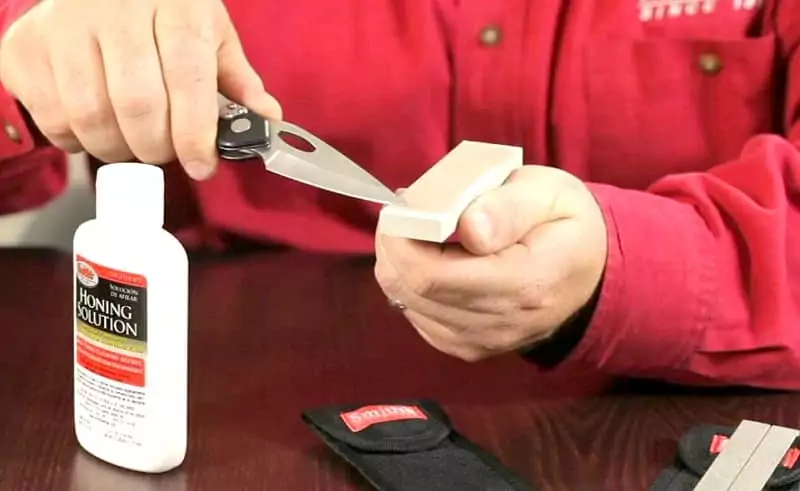
The key to sharpening any knife well is to maintain a consistent angle of rub between your knife and stone. For a smaller pocket knife blade, you should aim for about 10 to 15 degrees between the blade and the sharpening stone.
The easiest way to achieve this is to lay your blade flat on the stone and then tilt it up to the desired angle. Next, you can begin to glide your knife along the rough side of the stone. Around five or six strokes per sides should be enough.
Expert Tip: The strokes should have an almost ‘clean’ sound to them, if they have a scraping noise, then you probably need to adjust the angle of your knife.
Once you’ve finished on the gritty side of the stone, flip it over and do five or six strokes per knife side on the smooth side of your stone as well. Make sure to apply lubricant to your blade before starting this part of the process.
Once you’re finished make sure that you wash and dry your knife well to get rid of all the small metal particles that have come off it during sharpening as well as any remains of the lubricant. And voila! You should have a wonderfully sharp knife ready to effortlessly cut through tasks with.
Method #2: Sharpening with A Honing Rod
A more modern form of knife sharpening than the stone method involves a honing rod, or “sharpening steel” as they are sometimes called.
These rods are extremely popular in commercial and household kitchens because of their great ease of use. The smaller ones are also perfect for using out and about in tandem with a pocket knife.
When choosing a honing rod, it’s important to consider to the degree of sharpness that you’re looking for. Most rod options are created from steel, but they can also be produced from ceramic and diamonds.
Clearly, diamonds will give you the sharpest blade, but every type of rod will actually do a pretty decent job. Unless you’re in it for the showiness (and hey, that’s fine) we’d recommend just getting a regular sharpening rod made of steel. Chances are you won’t be able to tell the difference in your ending pocket knives’ sharpness between rod types.
The technique for sharpening with a rod is fairly simple, you can start by holding the rod by its handle and placing the tip firmly on a solid surface. Often it’s a good idea to place a towel or other material under the rod’s tip to avoid slipping during the sharpening process.
As well as avoiding slippage, this material will protect your bench or table top. If you’re out in the wild, find a log or large flat rock to rest the tip of your rod against.
After finding a good rod position, you’ll need to assess the angle at which to place your blade at. For pocket knives, the ideal sharpening angle is usually between 25 and 30 degrees. Angle really is fundamental to the sharpening process so take your time identifying and practicing your angling.
Sometimes asking someone who is proficient in sharpening knives is a god idea to get an initial understanding of the right angle. If all else fails, there is always YouTube!
Unlike stone sharpening, when using a rod, you’ll want to run your knife along the rod in a slow gentle motion. The gesture shouldn’t have too much pressure behind it and ought to run from the knife’s handle right through to the tip of the blade.
A couple of strokes should be enough for most edges, and doing these double strokes on both sides of your blade will ensure a nice even finish. And that’s that. Your blade is ready!
Method #3: Sharpening with A Serrated Rod
If your pocket knife has a serrated, “jagged” edge then you’ll need to sharpen it with a specially designed tool for the job. These tools are in rod form with tapered ends to carter different sized serrations.
Once you have obtained the appropriate tool, you’ll need to identify your pocket knife’s bevelled edge.

A bevelled edge is slanted in design. Regular straight blades generally favour both sides with bevelled edges, but serrated knives are often significantly more bevelled on one side than on the other. It’s important to only sharpen the obviously bevelled side of your serrated knife.
After you’ve identified the bevelled side of the pocket knife you can sharpen each of the gullets by holding them at a slight angle to the rod and making small short strokes.
Expert Tip: For safety, make sure that your sharpening strokes are always moving away you’re your body.
When each gullet has been sharpened individually your pocket knife will be primed and ready for action.
Want to know the best knife sharpener for your blade? See our comprehensive piece on this for more information.
You Can Now Get The Most Out Of Your Pocket Knife!
By now you’ll know exactly how to sharpen a blade, regardless of whether it has a serrated or smooth edge. Congratulations! This is certainly a useful and worthwhile life skill to have, especially if you’re in the habit of carrying around a pocket knife.
But knowing isn’t the same as doing, so make sure you practice these techniques a few times to perfect your motions with low-class knives before moving onto any highly prized pocket knives you may have.
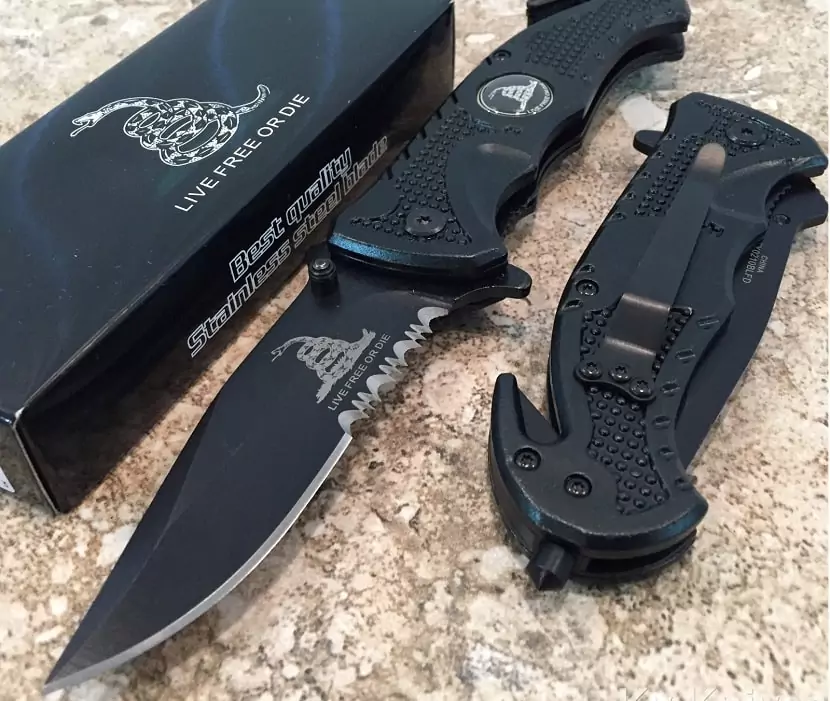
Being able to sharpen your knife will quickly increase the efficiency of any tasks that you use your knives for, and it will no doubt come in useful soon. Our last note to you: Always remember to get rid of the metal burs that will have broken off of the pocket knife during the sharpening stages. This can be done via washing the blade or rubbing it against the smooth side of your sharpening stone, or against fine grit sandpaper. Once your knife is clean, it’s ready to go!
Before embarking on your next camping trip, make sure you have everything ready. Our article which provides a checklist for your day hike, will be a tremendous help for you – check it out.
We rate knowing how to sharpen a knife as a pretty useful life skill, how about you? What tops your “life skills” list? Let us know in the comments below!




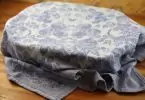


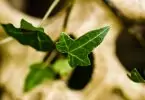
Excellent information about the sharpening of knives. I find it very useful while camping and cooking outside. Outstanding information given about knife using. I loved that! great quality. Best to use for dicing and slicing.
Amazed to see how that old trick of using a stone for sharpening a knife is still alive and works well. Still, keep in mind that not everyone can do it – if you don’t follow the right technique, you can end up ruining a perfectly good knife.
Hi Robert! Sharpening knives can be arduous, but necessary if you want to keep those blades sharp and useful. I wonder which sharpening method you found useful? As for me, I’m kinda old school so I still prefer using the stone method. It’s a no-brainer method for me!
Actually, it’s pretty simple to do and works for me perfectly. It just takes a bit of practice, just like what you’ll do with a serrated or honing rod. You’ll also find a lot of videos showing you how to sharpen your knives seamlessly.
Thanks for dropping by!
This is quite an informative article, thank you. As an avid backpacker, I know how important it is to always have my pocketknife on me and it must always be sharp. It is great to know the different ways I can sharpen it. This is a great read not just for campers but for everyone who uses knives.
Thanks Paul! I wonder which one of the methods you prefer? Stone or rod?
For me, it’s a no-brainer: stone! It’s easier and I believe my blades are sharper than ever!